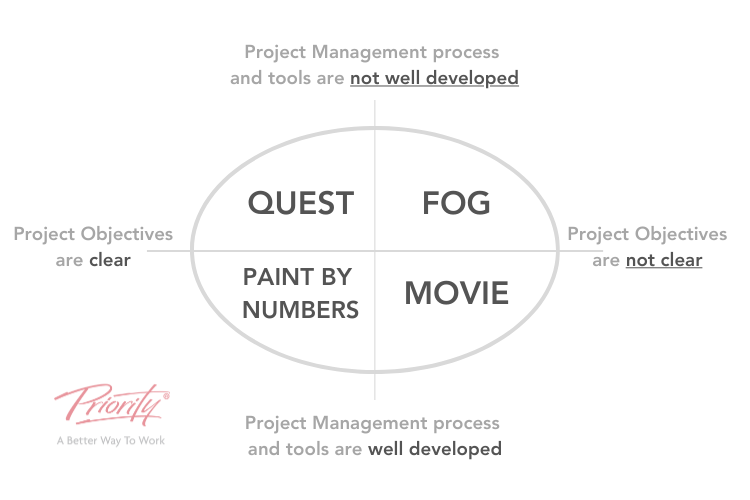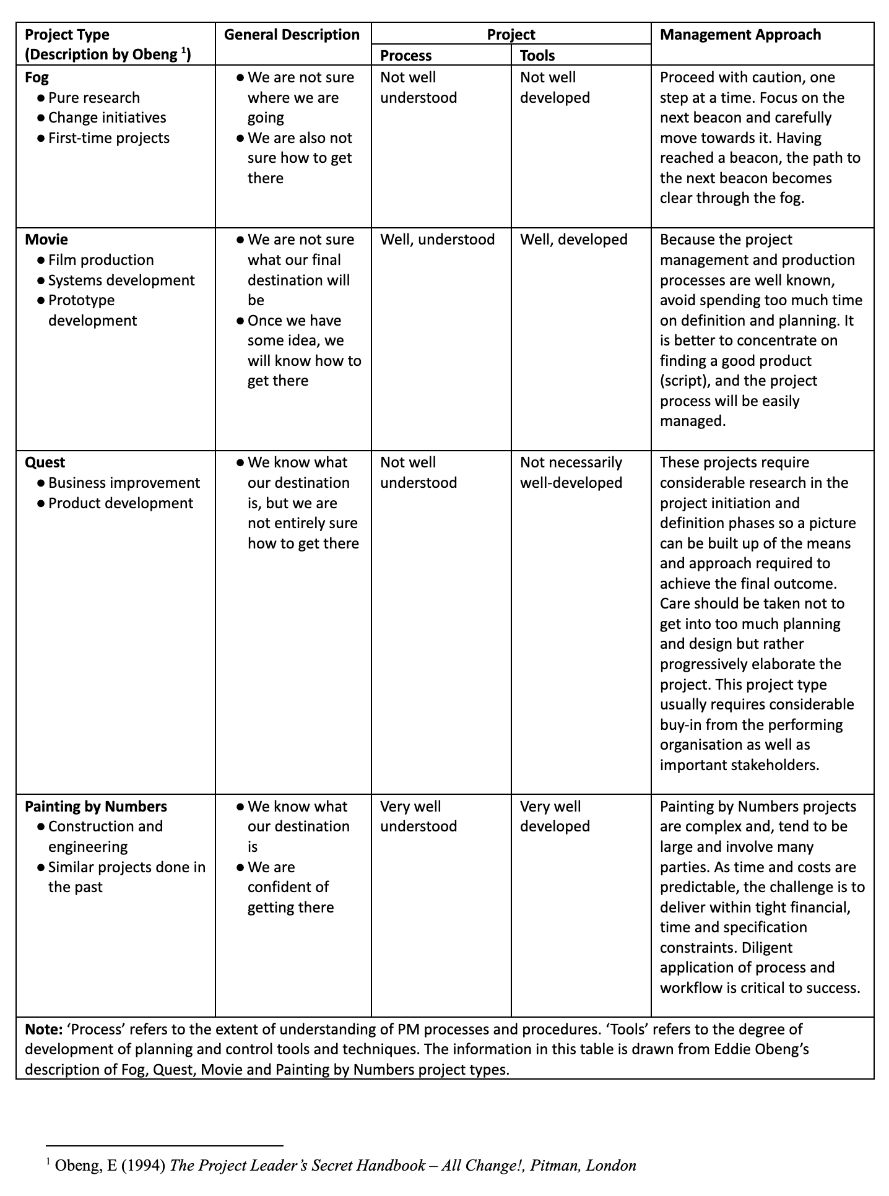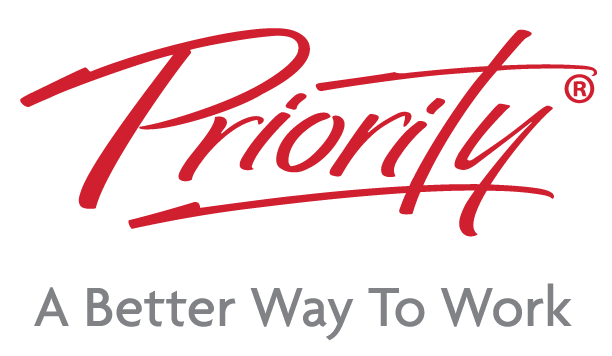I have been involved in scheduling projects for the past 46 years. In that time, I have witnessed various approaches to project scheduling. Each have their pros and cons depending on the type of project you are scheduling. Issues generally arise when team members have conflicting approaches. It is important that whichever method is chosen, all people in the project use the same method. Therefore, the type of project needs to be identified before the project starts. In 1994 Eddie Obeng identified the various types of projects in his book The Project Leader’s Secret Handbook – All Change, Pitman, London
Eddie Obeng’s project types descriptions below give us an insight into the methods used by various project managers when planning projects.
Project Types




From the diagram and table above, it is easy to see that all types can use a combination of approaches. However, the Paint by Numbers and Movie projects lend themselves to a process and workflow approach and the Fog and Quest projects lend themselves to an iterative or Agile approach.
The methods used for tracking these schedules have also developed over the years with the process and workflow projects using Gantt charts and Network diagrams and the iterative projects using Kanban boards and swim lanes. As computers developed the number of software packages linked to these methods has grown. Capterra records 1262 project management related software packages. These software packages provide varying features related to the process and workflow approach or the iterative/Agile approach.
Whatever method is chosen and what software is used often comes down to personal or organisational preferences. Discussions regarding what is the most effective are usually split on tribal grounds.
Somehow the most effective methods of scheduling. i.e., project flowcharts (network diagrams/PERT charts/ Critical Path diagrams/Critical Chain Diagrams/ execution plans) seems to have been passed over. This is due in part to scheduling software having a Gantt chart or swim lane base. Project Managers who wanted to continue using logical connections to develop project plans have continued to plan projects on manual project boards before transferring that information into project software.
This method requires input from all Subject matter experts. It identifies cross dependencies between project deliverables more effectively than any other method. The advantage is that it produces both a work breakdown structures that fit the process and workflow approach and task boards that fit the iterative approach. To create realistic and accurate execution plans you need to create the flowchart and that will populate your spreadsheets with the appropriate data.
Unlock Your Project’s Full Potential with Our Project Management Courses!
The right scheduling method depends on your project type and preferences. Understanding the distinct needs of your project can lead to more successful project management. If you’re interested in exploring these methods further and want to learn more about project scheduling, consider enrolling in our Project Management Courses. You can find more information about our training options here.
